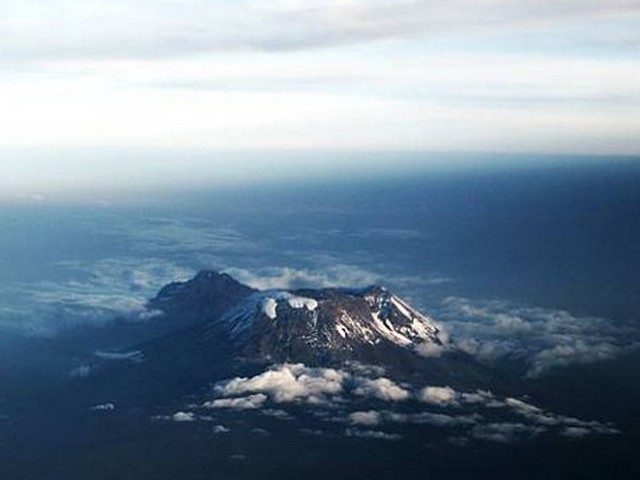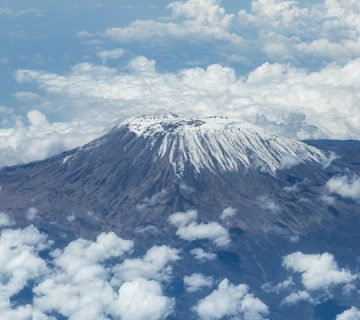Protecting Kilimanjaro’s Ecosystem During Treks: A Guide by KCTE
As towering as it is and visible from miles away, Mount Kilimanjaro is not just an icon of majesty—it’s a beacon of biodiversity and natural beauty that calls to the adventurer in all of us. At the Kilimanjaro Centre for Trekking and Ecotourism (KCTE), we are not just passionate about guiding you to the summit; we are devoted to preserving the beauty you come to see. This guide offers not just a journey, but a pathway to becoming a protector of the Kilimanjaro ecosystem during your trek.
Introduction: Why Kilimanjaro’s Ecosystem Matters
Mount Kilimanjaro, Africa’s highest peak, is more than just a mountain. It’s a vibrant ecosystem comprising lush rainforests, alpine meadows, and arctic summits. This diverse environment hosts unique flora and fauna that are as integral to the mountain’s identity as its snowy cap. However, the increasing foot traffic of eager trekkers from around the globe poses potential threats to this delicate ecosystem. Understanding and mitigating our impact is crucial, and it starts with how we trek.
Embracing Responsible Trekking Practices
Leave No Trace
"Leave no trace" is more than a principle; it’s a commitment to conservation. When trekking Kilimanjaro, it’s imperative to leave the mountain as untouched as possible. This means packing out all waste, staying on designated trails to avoid disturbing untouched soil and vegetation, and being mindful of where you camp.
Sustainable Use of Resources
Water and firewood are precious on the mountain. At KCTE, we emphasize the importance of using water sparingly and encourage the use of personal water bottles that can be refilled at designated points. Firewood collection is a no-go; we provide sustainable alternatives for heating and cooking that minimize environmental impact.
Supporting Conservation Efforts
Participate in Eco-Friendly Tours
Booking your climb with conscientious operators like KCTE ensures that part of your tour fees go directly towards conservation efforts. We organize eco-friendly tours that adhere strictly to environmental guidelines and support local conservation initiatives.
Engage with Local Conservation Projects
Kilimanjaro is surrounded by communities that have a deep cultural and ecological connection to the mountain. We provide opportunities for trekkers to engage with local conservation projects, which not only enhances the trekking experience but also aids in the preservation efforts of these communities.
Flora and Fauna: The Jewels of Kilimanjaro
Unique Species to Look Out For
As you ascend Kilimanjaro, the changing ecosystems unveil a variety of species that are a wonder to behold. From the delicate Kilimanjaro impatiens to the majestic crowned eagle, biodiversity is rich. We educate our trekkers on the various species en route, fostering a greater appreciation and a deeper commitment to preserving these wonders.
Impact of Human Activity on Wildlife
Human presence can stress wildlife, sometimes altering their natural behaviors and habitats. Our guides are trained to help trekkers observe wildlife responsibly, maintaining a safe distance, and using quiet voices to ensure minimal impact.
The Role of Eco-Tourism
Educating Trekkers
Knowledge is power. At KCTE, we believe an informed trekker is an eco-friendly trekker. Our pre-trek orientations cover the ecological dos and don’ts that help in preserving the mountain’s delicate balance.
Building a Community of Eco-Warriors
Every trekker returns home as an ambassador of Kilimanjaro’s ecosystem. By sharing their experiences and the conservation lessons learned, they help spread the critical message of sustainability and respect for nature far and wide.
Conclusion: Your Role in the Legacy of Kilimanjaro
Trekking Kilimanjaro is an adventure of a lifetime, and it carries with it a responsibility—to protect and preserve. Choosing KCTE as your guide on this journey ensures that you partake in an experience that respects the mountain’s ecological integrity. Your trek can help sustain the beauty of Kilimanjaro for generations to come.
Are you ready to be more than just a trekker? To be a guardian of one of the earth’s most awe-inspiring natural wonders? Book your Kilimanjaro climbing adventure with Kilimanjaro Centre for Trekking and Ecotourism (KCTE) today, and step into a role that goes beyond exploration to preservation.
FAQ: Protecting Kilimanjaro’s Ecosystem
Q: What can I do to minimize my impact while trekking Kilimanjaro?
A: Stick to the trails, pack out all your trash, use water efficiently, and respect wildlife by observing from a distance.
Q: How does choosing KCTE help in conserving Kilimanjaro?
A: A portion of your fees goes directly to conservation efforts, and all our tours are designed to adhere strictly to eco-friendly practices.
Q: Can I participate in local conservation efforts during my trek?
A: Yes, we offer programs that connect trekkers with local conservation projects, providing a hands-on opportunity to contribute to the preservation of Kilimanjaro’s ecosystem.
Q: Why is it important to stay on designated trails?
A: Straying from the trails can lead to soil erosion and disturbs vegetation, which can have long-term negative effects on the mountain’s natural habitat.
Mount Kilimanjaro is not just a mountain; it’s a symbol of nature’s immense beauty and power. By trekking responsibly, you help ensure it remains a source of wonder and inspiration for all who wish to witness its majesty. Join us at KCTE, where every trek is a step towards conservation.




